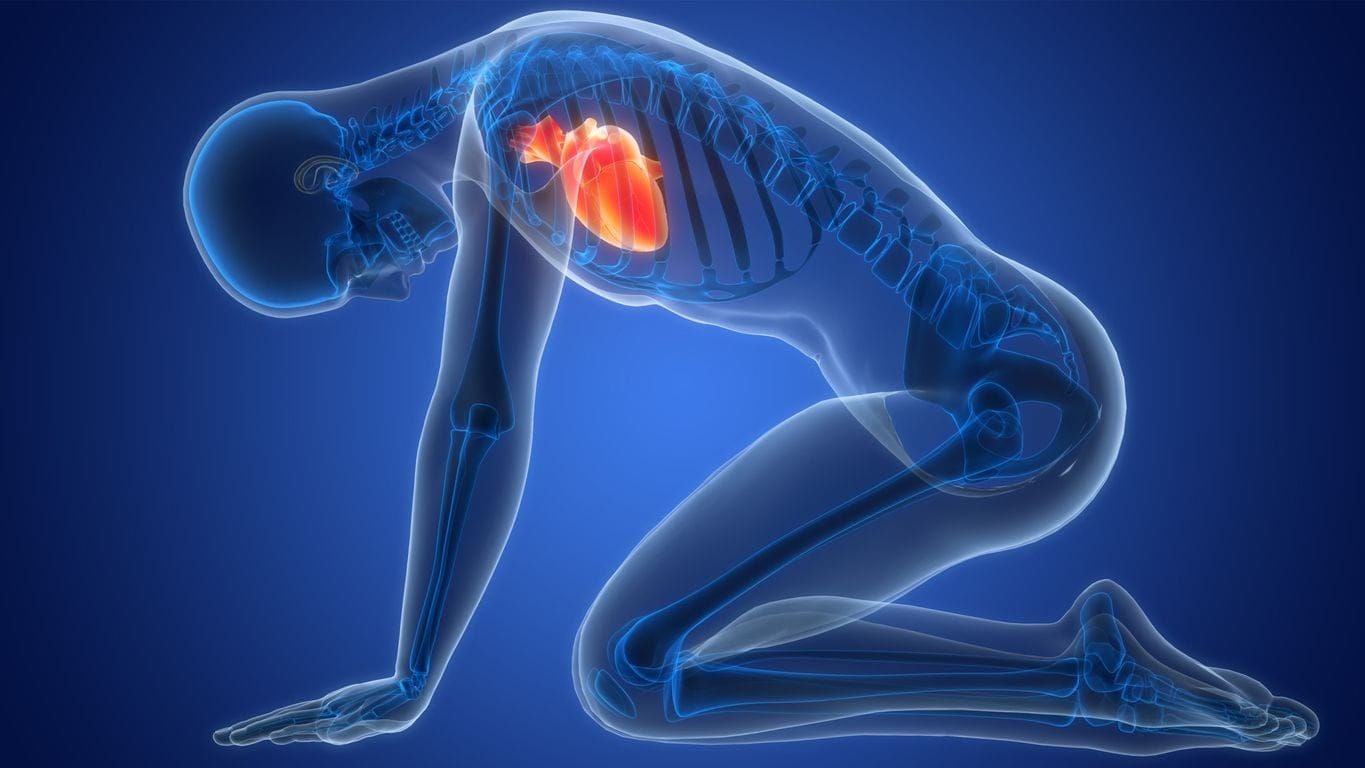Hidden danger: Why even elite athletes are at risk of atrial fibrillation
)
Moderate amounts of exercise are protective, but both too little exercise and too much exercise are associated with increased risk of atrial fibrillation.
Atrial fibrillation (AF) is the most common type of sustained cardiac arrhythmia, characterised by an irregular and often rapid heart rate. While AF is generally associated with older adults and those with underlying cardiovascular conditions, evidence shows that athletes, particularly men engaged in long-term endurance sports, are also at increased risk. Understanding this risk is crucial for the health and performance of athletes, who may otherwise be considered among the fittest members of the population.
Although this might sound alarming for fitness fanatics, let’s put this into context. The value of exercise for the longevity and good health of the population as a whole is widely recognised:
“...the overall health outcomes and longevity among even the most intensively trained athletes are significantly better that of the general population” (La Gerche, 2020)
However, the number of athletes with AF is increasing, and athletes who develop AF can have debilitating symptoms and unique management issues.
Understanding atrial fibrillation
Atrial fibrillation occurs when the heart's upper chambers (atria) beat irregularly and out of coordination with the lower chambers (ventricles). This can lead to symptoms such as palpitations, shortness of breath, fatigue and dizziness. More concerningly, AF significantly increases the risk of stroke, heart failure and other heart-related complications. Recent studies have documented that the increased risk of stroke with AF also applies to athletes, although possibly at a slightly lower relative risk than the general population.
Risk factors in athletes
According to the European Society of Cardiology (ESC) 2020 Guidelines for the Diagnosis and Management of Atrial Fibrillation, risk factors for AF in athletes include:
- Male sex
- Middle age
- Endurance sports
- Tall stature
- Total lifetime exercise dose exceeding 1500-2000 hours
Several studies have shown a link between long-term endurance exercise and an increased risk of developing atrial fibrillation.
“In endurance athletes, prolonged high intensity exercise participation can have deleterious effects on the myocardium [heart muscle] with subsequent structural and electrical remodelling.” Fatkin et al. (2018)
Mechanisms of AF risk in athletes
The mechanisms by which competitive sports predisposes athletes to AF is still a matter of intense speculation. Factors potentially contributing to this risk are outlined below.

Changes in heart structure and function: Endurance athletes often engage in high volumes of intense exercise over many years, and research suggest that it is the lifetime hours of participation and training volume that increase the risk of developing AF. Intense and prolonged physical stress can lead to changes in the heart's structure and function, such as atrial enlargement and fibrosis, which are precursors to AF.
Autonomic imbalance: The autonomic nervous system, which regulates heart rate, can be excessively stimulated in athletes due to chronic, high-intensity training. Consequently, heartbeat regulation can become imbalanced. This imbalance may predispose athletes to arrhythmias, including AF.
Inflammation and oxidative stress: Intense physical activity can cause systemic inflammation and increased oxidative stress, both of which have been implicated in the development of atrial fibrillation.
Electrolyte imbalances: Athletes, particularly those engaging in endurance sports, may experience electrolyte imbalances due to excessive sweating and inadequate rehydration, potentially contributing to the risk of AF.
Gender: The association between endurance sport and AF has not been clearly demonstrated in women. Based on research to date, women appear relatively protected.
Genetics: In a subset of athletes, there may be a predilection for structural and electric remodelling of the atrial myocardium (heart muscle) which increases the risk of AF.
Evidence from studies
Research has provided substantial evidence of the increased risk of AF in athletes, summarised as follows.
Epidemiological Studies: Studies have shown that the prevalence of AF is higher among athletes compared to the general population. For example, a meta-analysis published in the British Journal of Sports Medicine (Newman et al. 2021) found that athletes had a 2.5-fold increased risk of AF compared to non-athletes.
Longitudinal Studies: Long-term follow-up studies have revealed that athletes engaged in sports disciplines with high volumes and intensities of endurance training, such as marathon running, cycling, cross-country skiing, and rowing, are particularly at risk. These studies suggest that the cumulative lifetime hours of intense exercise correlate with the incidence of AF.
Clinical Observations: Clinicians have observed that AF is not uncommon in middle-aged and older athletes who have maintained a high level of endurance exercise over decades.
Implications for Athletes
The increased risk of atrial fibrillation in athletes has several important implications for AF detection and management.
Early detection and monitoring: Regular cardiovascular screening, including electrocardiograms (ECGs), can help in the early detection of AF in athletes, enabling timely intervention and management. However, a cautionary approach is recommended for healthy young athletes when considering screening.

Refer to Heart Health for Athletes’ article: Heart screening for athletes: More harm than good?
Risk reduction strategies: Athletes should be educated about the risks of AF and advised on strategies to mitigate these risks. This may include balancing high-intensity training with adequate recovery periods, ensuring proper hydration and electrolyte balance, and managing inflammation through diet and lifestyle.
Management of AF: For athletes diagnosed with AF, management should be tailored to their unique needs. This may involve a combination of medication, lifestyle modifications, and potentially adjustments to their training regimen. Collaboration with sports cardiologists is essential to optimise care. Athletes with AF are often desperate to know how treatments will affect performance, whether they can return to competition, and when. Relatively young and otherwise healthy athletes are generally poorly tolerant of medical management options and can be averse to long-term anti-arrhythmic drug therapy.

For more information on clinical guidelines for the management of AF in athletes, please refer to the following article by Heart Health for Athletes: Guidelines for atrial fibrillation in athletes
Education and awareness
Raising awareness among coaches, trainers, and athletes about the signs and symptoms of AF (palpitations, shortness of breath, fatigue and dizziness) can lead to earlier recognition and treatment, potentially preventing severe complications.
Conclusion
While athletes are often seen as paragons of health, the risk of atrial fibrillation in this population is a growing concern. Understanding the factors that contribute to this increased risk and implementing appropriate preventive and management strategies are crucial for ensuring the long-term health and performance of athletes. Ongoing research and tailored guidelines will further aid in addressing this important issue, helping athletes maintain both their competitive edge and cardiovascular health.
---
References
Darragh Flannery M, Kalman, JM, Sanders P, & La Gerche A (2017). State of the art review: Atrial fibrillation in athletes. Heart, Lung and Circulation 26(9): 983-989. https://doi.org/10.1016/j.hlc.2017.05.132
Elliott A.D, Linz D, Mishima R, et al. (2020). Association between physical activity and risk of incident arrhythmias in 402 406 individuals: evidence from the UK Biobank cohort. European Heart Journal, 41:1479-1486. https://pubmed.ncbi.nlm.nih.gov/31951255/
Hindricks et al. (2020). 2020 European Society of Cardiology (ESC) Guidelines for the Diagnosis and Management of Atrial Fibrillation Developed in Collaboration with the European Association of Cardio-Thoracic Surgery (EACTS): The Task Force for the Diagnosis and Management of Atrial Fibrillation of the European Society of Cardiology (ESC) Developed With the Special Contribution of the European Heart Rhythm Association (EHRA) of the ESC. European Heart Journal, 42(5): 373-498. https://doi.org/10.1093/eurheartj/ehaa612
Fatkin D, Cox CD, Huttner IG, & Martinac B (2018). Is there a role for genes in exercise-induced atrial cardiomyopathy? Heart and Lung Circulation, 27(9):1093-1098. https://pubmed.ncbi.nlm.nih.gov/29706494/
Jin, MN, Yang, PS, Song, C. et al. (2019). Physical Activity and Risk of Atrial Fibrillation: A Nationwide Cohort Study in General Population. Scientific Reports, 9, 13270. https://doi.org/10.1038/s41598-019-49686-w
La Gerche A (2020). Reassuring news for athletes with atrial fibrillation, but perhaps not all athletes. Journal of the American College of Cardiology: Clinical Electrophysiology, 10:1275-1277. https://doi.org/10.1016/j.jacep.2020.06.013
Mandsager KT, Phelan DM, Diab M, et al. (2020). Outcomes of pulmonary vein isolation in athletes. Journal of the American College of Cardiology: Clinical Electrophysiology, 6:1265-1274. https://www.acc.org/latest-in-cardiology/journal-scans/2020/08/13/15/28/outcomes-of-pulmonary-vein-isolation-in-athletes
Newman W, Parry-Williams G, Wiles J, et al. (2021). Risk of atrial fibrillation in athletes: a systematic review and meta-analysis. British Journal of Sports Medicine, 55:1233-1238. https://doi.org/10.1136/bjsports-2021-103994
Svedberg N, Sundstrom J, James S, et al. (2019). Long-term incidence of atrial fibrillation and stroke among cross-country skiers. Circulation, 140: 910-920. https://www.ahajournals.org/doi/10.1161/CIRCULATIONAHA.118.039461
| Tags:Heart Health for AthletesHH4AAtrial FibrillationSports CardiologyElite Athlete Essentials |

)